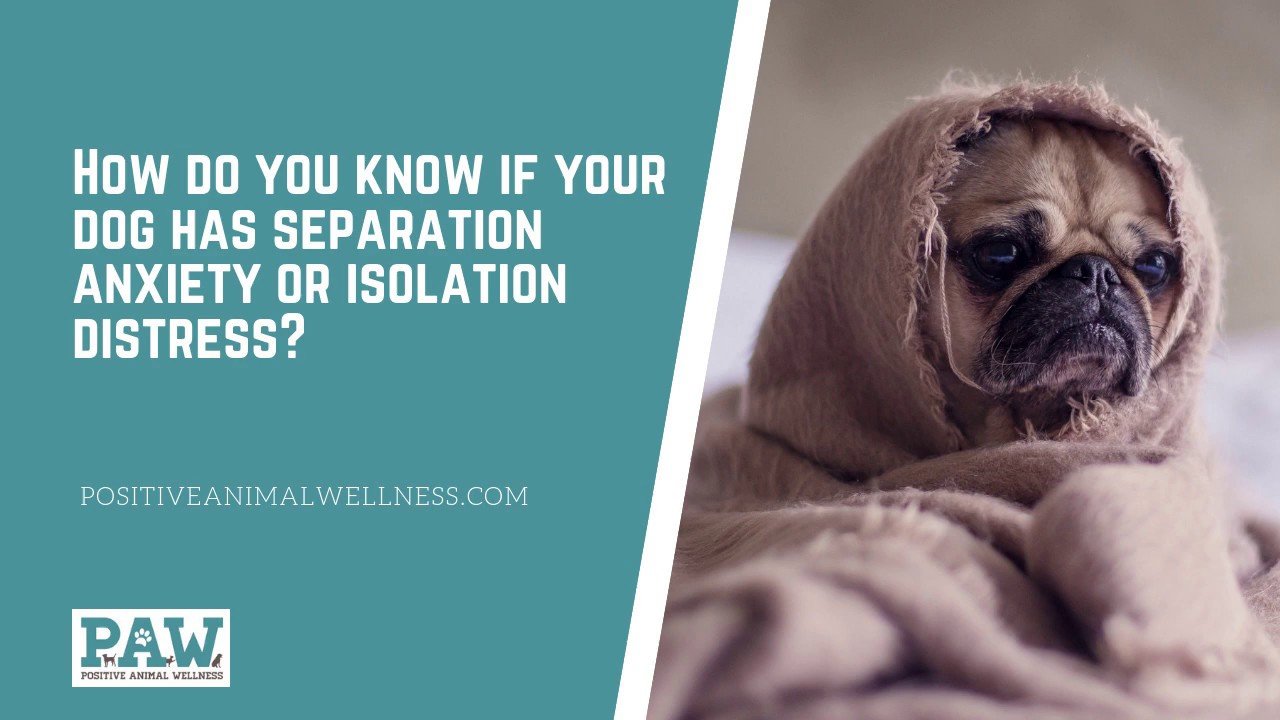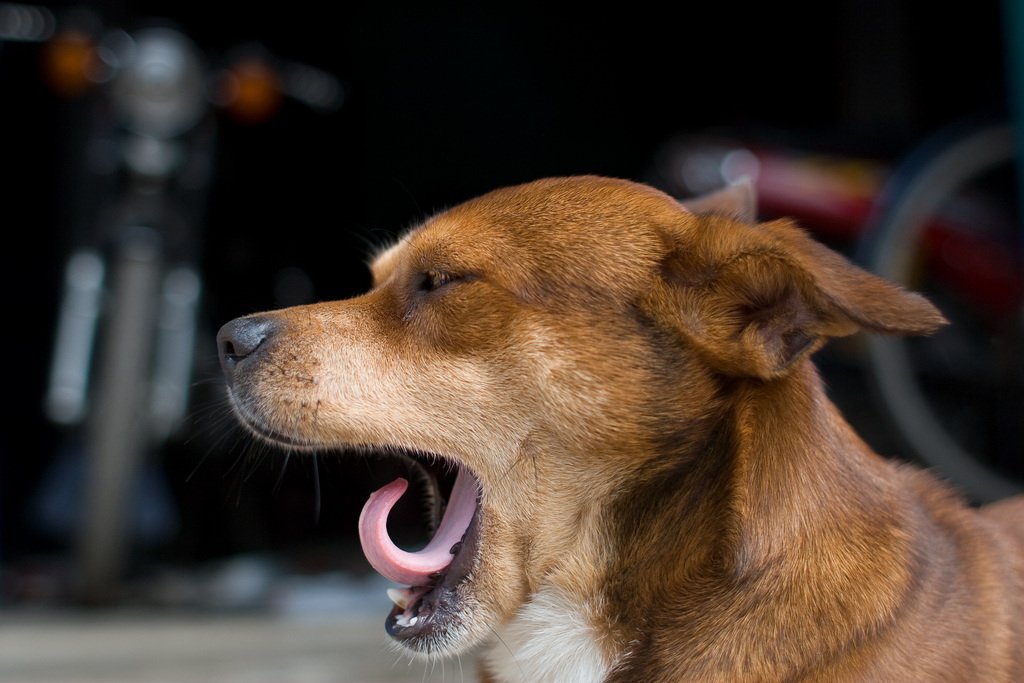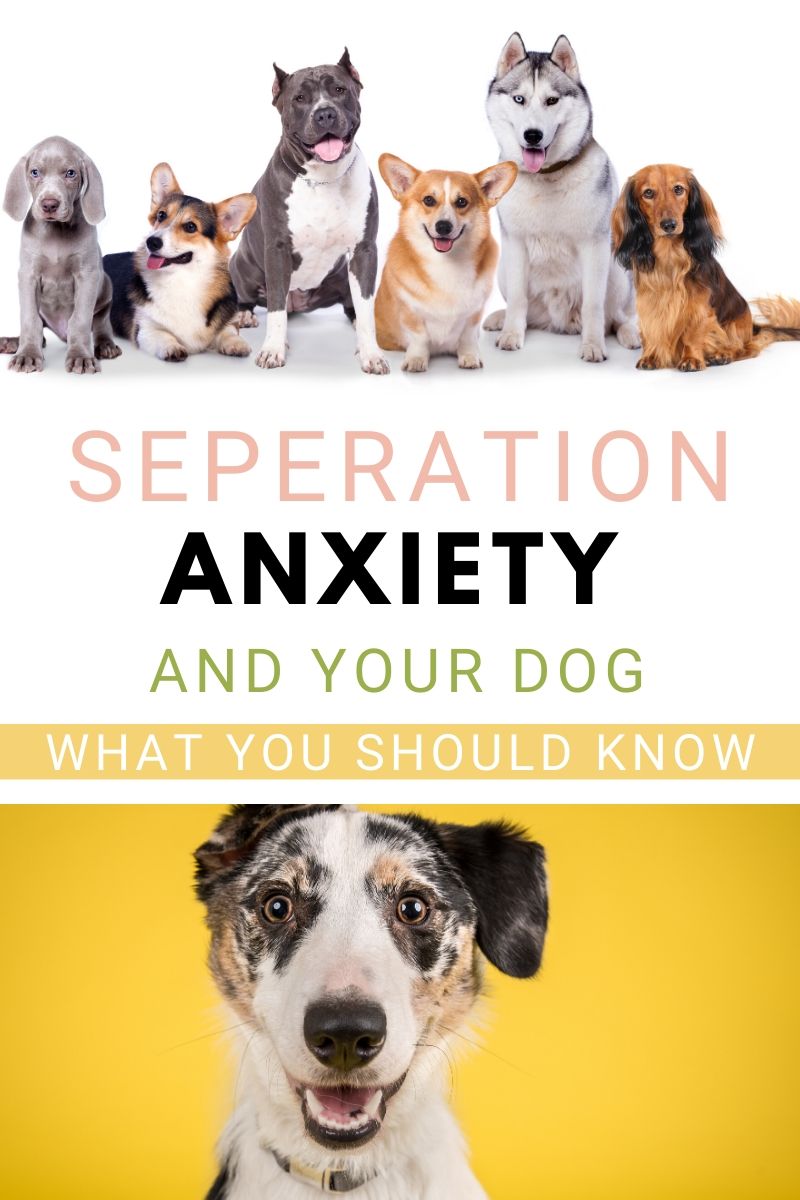Having Diarrhea Or Accidents
Adrenaline affects dogs similarly to humans, causing an urge to go to the bathroom. Your dog may immediately posture and urinate as a result of stress, dribble urine, lose control of their bowels, or even have diarrhea.
This behavior is modulated by the sympathetic nervous system. A lesser gastrointestinal sign of stress in dogs is a decreased appetite. A stressed dog may even refuse their favorite treats if their anxiety level is too high.
How To Deal With A Fearful Dog
There remains some disagreement among animal professionals about the best way to treat fear in dogs. This symptom, incidentally, is often the most difficult problem to treat when rehabilitating shelter animals. Many of these dogs lack proper socialization. Some have been abused.
Some mildly fearful dogs may be treated by loving owners without professional help. In these cases, one must be patient and have an understanding of the dog’s reality. Sometimes it’s difficult to keep in mind that a dog who runs away from a welcoming owner is genuinely afraid.
One widely agreed-upon strategy is to give such a dog as much space as you can. Distracting the dog with obedience commands sometimes works. Valuable treats are usually helpful. It is rarely successful to punish a dog who has committed some act of aggression or engaged in destructive behavior. In a sense, a fearful dog expects to be punished. That may be one reason why the dog is fearful. This association needs to be stopped without punishment.
Highly fearful dogs typically require professional help. Good dog trainers go far beyond obedience issues and are better qualified to retrain a greatly fearful dog than even the most loving owner. In many cases, the outcome will be an improvement but not total rehabilitation. Look for a skilled dog trainer or behaviorist with excellent recommendations.
Are There Any Long
The short answer is yes, but it depends on the cause of your dogs anxiety. If your dog is anxious because of Separation Anxiety, for example, the best solution is to provide plenty of attention and exercise while youre together, and then gradually increase the amount of time youre away from them.
If your dog is anxious because of Fear, the best solution is to gradually expose them to the things theyre afraid of in a controlled and safe environment.
And if your dog is anxious because of Generalized Anxiety, the best solution is to provide a calm and consistent routine. Whatever the cause of your dogs anxiety, there are long-term solutions that can help reduce their stress levels and improve their quality of life.
Fur-well Conclusion: If you think your pup might be anxious, there are a few telltale signs to look out for. Dogs with anxiety may pace or circle incessantly, bark excessively, chew on inappropriate objects, and have accidents in the house.
If youre noticing any of these behaviors, its time to talk to your veterinarian about how to help your furry friend feel more at ease. Thanks for following along until next time!
Recommended Reading: How To Fix An Anxiety Disorder
How Do I Know If My Dog Has Anxiety
- He might have a habit of barking or howling when left alone.
- He might present physical indications such as panting, shivering, cowering or pacing.
- He might try to run away, dig excessively or consistently challenge the fencing in your yard.
- He might chew on or destroy furniture and items that are not “his toys” while unsupervised.
- He might show signs of self-harm, such as excessive licking or chewing on fur or paws.
Do Cbd Dog Treats Help With Anxiety

A lot of pet owners use CBD supplements to calm down their dogs. However, since every dog is different, the results may vary depending on your dog’s weight and size. Results may last up to 8 hours depending on your pet’s energy levels, for example and while some dogs might only need one serving a day, others might need more than that. You can also rest easy knowing that these treats will not have psychoactive effects on your pets since they do not have any THC in them.
SYZYGY offers various CBD products for you and your furry pals. With an emphasis on science, they promise that all of their customers – canine or human – will feel a difference and enjoy life to the fullest. Their benefits are consistent and apparent, so you and your dog can look forward to an anxiety-free life.
Don’t Miss: How To Overcome Food Anxiety
Depression And Anxiety In Dogs: Symptoms And Treatments
Dogs can suffer from anxiety and depression, much like humans. Today, our Redding vets share the symptoms to look for and how you can help your canine companion cheer up.
As proud pet parents, it shouldn’t surprise you that dogs are intelligent, emotional creatures. As such, they are indeed capable of suffering from depression and anxiety much as humans can.
How Can I Help My Dog With Anxiety
There is no single best way of helping dogs cope with anxiety. Every dog and every anxiety type is different.
For example, some dogs respond to pheromone diffusers and collars , while others need anti-anxiety medication. There are also anxious dogs that need behavior modification like desensitization and counterconditioning and dogs that calm down simply by wearing a thundershirt.
Pet owners must work with their veterinarians and veterinary behaviorists to find the best management plan for their dogs anxieties.
Read Also: Can Vitamin D Help With Anxiety
How To Help An Anxious Dog
If your dog is diagnosed with anxiety, her treatment could depend on a few things:
- The source of the anxiety
- The intensity and duration of the anxiety
- How often your dogs behavior is affected by anxiety
For more severe and more frequent cases, anxiety is usually treated with one or more medications to help reduce distress and physiological arousal, environmental changes to reduce the distressing characteristics of a scary event, and behavior modification aimed at improving the patient’s confidence in the scary situation, Dr. Burghardt said.
If your dog is experiencing more mild anxiety, this can usually be treated by desensitizing your dog to the scary situation and working on building your pups confidence all with the help and advice of your vet or dog behaviorist.
Excessive Panting Drooling Or Salivation
Also called hypersalivation, this behavior includes drooling and foaming at the mouth. Even though it doesnt always involve slobbering, it often includes panting, or heavy, difficult breathing and is also considered to be one of the most common anxiety symptoms. Seeing your pooch drooling and seemingly having a problem breathing might make you think they are having a heart attack, but its quite possible its just their way of expressing distress.
Also Check: What Are All The Symptoms Of Anxiety
Is Your Dog Anxious Look For These Signs
Wouldnt life be so much easier if your dog could just talk to you and tell you how theyre feeling? Yes, of course it would! Youd never have to ask yourself, is my dog anxious? But the truth is, your dog is giving you clues as to whether theyre feeling anxious, happy, or bored.
Theres just one problem: theyre communicating in a foreign language.
Most humans can only identify the most obvious signs of a dogs feeling state. This is especially troublesome when a dog is feeling anxiousthey may silently scream at the top of their lungs with their actions, but if their owners arent fluent in body language, their attempts to communicate will fail.
Brush up on your dog speak to figure out whether your dog is anxious, in particular, with this dog body language dictionary.
Maintain A Relaxing Home Environment
We often don’t consider how hectic our home life can be for dogs. For a dog that has anxiety issues, being in a home environment that’s busy and noisy can cause a lot more stress. Consider ways you can create more calm for your pet, like reducing the number of visitors you have or moving the dog’s food bowl to a quiet, private spot. Avoid taking your dog to locations that are crowded or unpredictable. Your dog may also find certain scent sprays and diffusers comforting.
Read Also: Can You Have Anxiety While Sleeping
How To Handle A More Severe Problem
Use the techniques outlined above along with desensitization training. Teach your dog the sit-stay and down-stay commands using positive reinforcement. This training will help them learn that they can remain calmly and happily in one place while you go to another room.
Exercise and mental stimulation are critical to reducing anxiety and stress. Be sure your dog receives adequate exercise before you leave. Walking the same city block each day wont reduce anxiety, but sniffing and exploring new places will.
Create a “safe place” to limit your dog’s ability to be destructive while youre away. A safe place should:
- Confine the dog loosely .
- Contain busy toys for distraction.
- Have dirty laundry to lend a calming scent cue or other safety cues.
How Can You Help A Dog With Anxiety

The first thing to do is to ensure you can read the signs of anxiety in your dog and know the contexts in which they become anxious. Many dog owners find it helpful to keep a log or record of their dog’s anxious behaviors and what happened right before, during, and after those behaviors occur. With that context, here are some next steps:
Read Also: Is Ginger Good For Anxiety
Tips For Calming Anxiety In Dogs
If your pet experiences bouts of anxiety or depression, consider your routine and ways that you can help alleviate symptoms. Training with positive reinforcement can also help reduce recurring anxiety.
Mild cases of separation anxiety can be addressed with a counter-conditioning program, where, over time and through positive reinforcement, we change the dogs negative reaction to a situation to a positive one, says Erin Katribe, DVM and medical director for Best Friends Animal Society. This is usually achieved through associating the situation with something really positive that the dog enjoys, like really delicious food or engaging toys. Its also helpful to start the training process by providing these positive items while youre gone for only a short period of time the goal is to avoid the fear and negative association all together.
For more severe cases, she adds, training can be much more complex, and I recommend consulting a trainer or veterinary behaviorist. In severe cases, the dog has so much anxiety that they wont eat or engage with the toy or food item.
In any training scenario, be mindful of your own demeanor. Pets can sense your emotions, so its always best to try to be a calming influence. Giving too much attention when leaving and returning home can heighten anxiety in pets, says Dr. Jamie Richardson, chief of staff at Small Door Vet.
How Can I Prevent Dog Anxiety
As a dog owner, there are several things you can do to prevent dog anxiety. Here are some helpful tips on how to keep your dog stress-free:
- Avoid Triggers. Obviously, the best thing you can do is avoid potential anxiety triggers. Sadly, this is not always possible. However, it helps if you can minimize the exposure.
- Start Training. Dog training can go a long way in shaping your dogs behavior. If training your dog is more than you can handle, you can hire a professional dog trainer.
- Regular Exercise. Physical activity is vital for preventing dog anxiety. Plus, regular exercise will keep your dog in shape and prevent obesity-related health conditions.
- Mental Stimulation. The dogs mind also needs exercise to stay sharp and healthy. You can prevent anxiety by providing interactive and puzzle toys for your dog.
- Socialization. Socialization can also help prevent anxiety. Enroll your puppy in a doggy daycare and make sure it meets new people and finds itself in different situations.
Recommended Reading: What Does Social Anxiety Mean
Do Dogs With Anxiety Bite
While dog bites can happen for many reasons, most puppies bite out of fear aggression. Just like humans, dogs can inherit a tendency to be anxious, but the dogs environment, life experience, and breed tendencies also play a role. That can lead to scared puppies that react with aggression to frightening events.
Clinical Signs Of Dog Anxiety And Fear
The clinical signs will vary depending on the severity of the fear or anxiety that the dog is suffering from. Here are some of the most common clinical signs:
-
Mild fears: signs may include trembling, tail-tucking, hiding, reduced activity and passive escape behaviors
-
Panic: signs may include panting, pacing, active escape behavior and increased out-of-context, potentially injurious motor activity
-
Sympathetic autonomic nervous system activity, including diarrhea
-
Lesions secondary to licking and biting their own body
-
Tail-chasing and circling
Recommended Reading: How To Help A Teenager With Anxiety And Depression
Causes Of Fear And Anxiety In Dogs
The onset of fear or anxiety issues in dogs can be prompted by a variety of things, from puppy socialization issues and age-related health conditions like dementia to traumatic experiences or genetics.
There is no catchall for the roots of these issues, but here are some of the most common causes of anxiety or fear in dogs:
-
Being forced into an unfamiliar and frightening experience
-
Being deprived of social and environmental exposure until 14 weeks of age
-
Phobias and panic: history of not being able to escape or get away from the stimulus causing the phobia and panic, such as being locked in crate
Any illness or painful physical condition increases anxiety and contributes to the development of fears, phobias and anxieties.
Aging changes associated with nervous system changes, as well as infectious disease and toxic conditions may lead to behavioral problems, including fears, phobias and anxieties.
Intense Pacing Or Circling
Another common indication your dog might have an issue is if they continue restlessly pacing or going in circles when theyre alone, so much that youre worried theyll wear away their paws. This anxiety symptom is most frequent with dogs that spend their alone time in small or enclosed spaces, like crates or cramped rooms, as well as with furballs that usually have problems with obsessive-compulsive behavior.
Also Check: What Can You Take For Anxiety Over The Counter
How To Treat It
First, talk to your vet to rule out any medical problems. Sometimes dogs have accidents in the house because of infections or hormone problems or other health conditions. It also could be due to incomplete housebreaking. And some medications can cause accidents. If your dog takes any drugs, ask your vet if they are to blame.
Dog Anxiety In The Car

Dog anxiety in the car is a common problem that many dog owners face. It can be tough to take your dog on a long car ride when theyre anxious and nervous. There are a few things that you can do to help ease your dogs anxiety, though.
First, try starting with short car rides around the block. This will help your dog get used to being in the car and help them associate it with something positive. Once your dog is comfortable with short car rides, you can start taking them on longer trips.
If your dog is still anxious, you can try using an anti-anxiety medication prescribed by your veterinarian. Dog anxiety in the car doesnt have to ruin your road trip plans. With a bit of patience and understanding, you can help your dog relax and enjoy the ride.
Don’t Miss: How To Slow Down Your Heart Rate From Anxiety
How To Tell If Your Dog Has Anxiety
Do you ever feel like your dog is constantly in a state of anxiety? Maybe youre not sure how to tell if your dog has anxiety, and thats why youre reading this article. In this article, well go over the signs and symptoms of canine anxiety so that you can determine whether or not your furry friend is experiencing this condition. Well also provide some tips on how to help your dog cope with any anxious feelings. So, without further ado, lets get started!
Car Anxiety Medications For Dogs
Often, car anxiety is treated with medications that reduce nausea and medications that reduce anxiety, Dr. Lindell said.
Dr. Roberts suggests that your vet might start with a medication to treat motion sickness to see if that stops the symptoms.
Anti-nausea and motion sickness medications are a good place to start when first treating this type of anxiety, Dr. Roberts said. Often, by controlling the motion sickness and nausea, you prevent the anxiety from starting.
If your dog still has symptoms, your vet may prescribe an anti-anxiety medication. And if that doesnt work, sedatives are next in line, Dr. Roberts said.
Sedatives reduce your dogs level of awareness of whats going on around him and can make your dog sleepy, both of which will help him relax on a car ride.
If your dog suffers from generalized anxiety, and hes afraid of more than just car rides, your vet might recommend chronic behavior modification drugs, like antidepressants. Just like in anxious humans, dogs can benefit from certain antidepressant drugs that help to increase serotonin levels in the brain and control anxiety-related behavior over the long term, Dr. Roberts said.
Keep in mind that you can only get these medications with a prescription from your veterinarian.
Read Also: What Vitamins Help With Anxiety
Hiding Or Acting Depressed
Stressed dogs will often hide behind you or objects such as chairs or cars to avoid stressors. They may seem hyperactive and use their muzzles to nudge your legs or hands to tell you to move away from the stressor. Your dog may also completely shut down, stop moving, and seem depressed or disassociated from the situation.